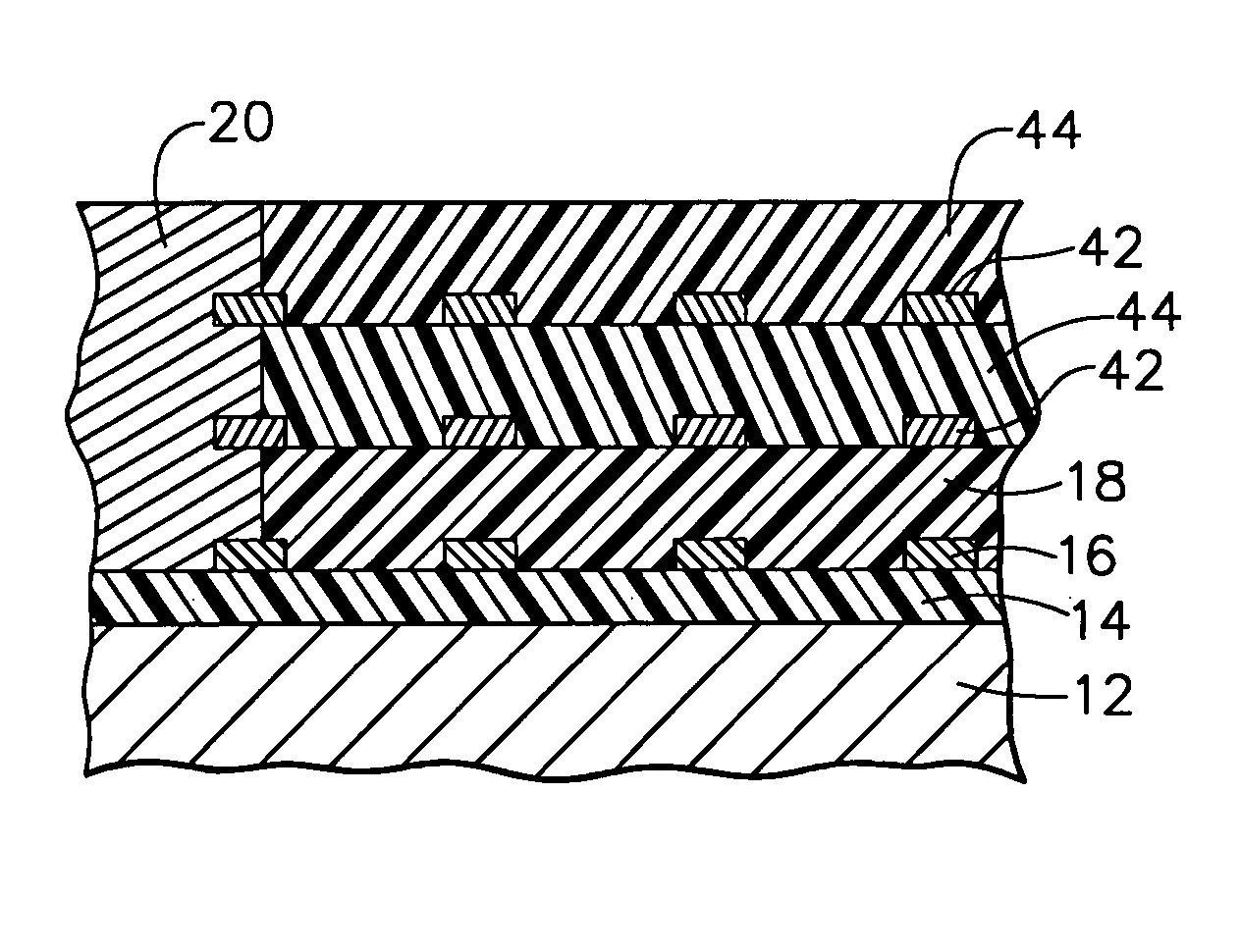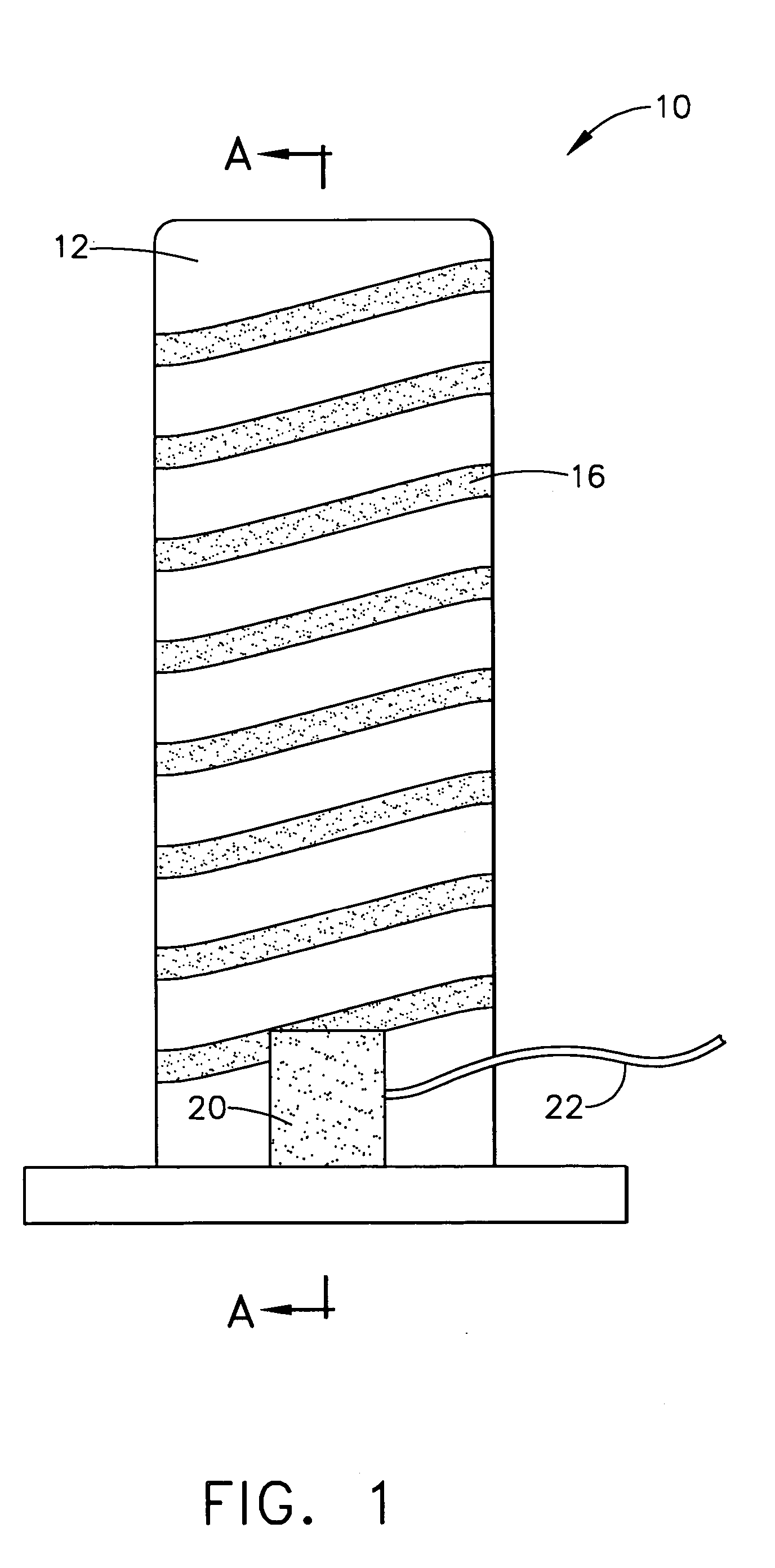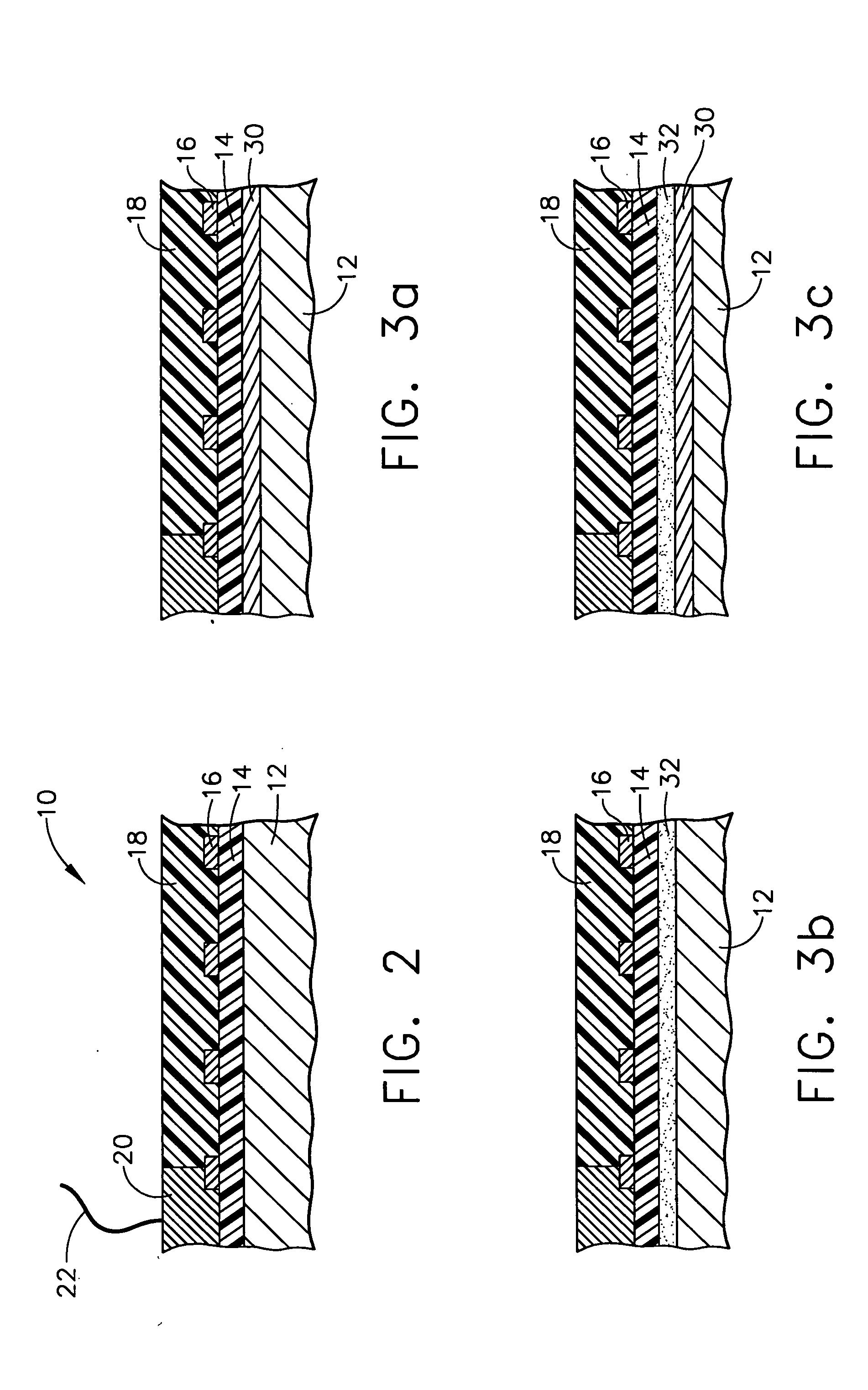Combined material layering technologies for electric heaters
- Summary
- Abstract
- Description
- Claims
- Application Information
AI Technical Summary
Benefits of technology
Problems solved by technology
Method used
Image
Examples
Embodiment Construction
[0027] The following description of the preferred embodiments is merely exemplary in nature and is in no way intended to limit the invention, its application, or uses.
[0028] Referring to FIGS. 1 and 2, a layered heater in accordance with one form of the present invention is illustrated and generally indicated by reference numeral 10. The layered heater 10 comprises a number of layers disposed on a substrate 12, wherein the substrate 12 may be a separate element disposed proximate the part or device to be heated, or the substrate 12 may be the part or device itself. As best shown in FIG. 2, the layers preferably comprise a dielectric layer 14, a resistive layer 16, and a protective layer 18. The dielectric layer 14 provides electrical isolation between the substrate 12 and the resistive layer 16 and is formed on the substrate 12 in a thickness commensurate with the power output, applied voltage, intended application temperature, or combinations thereof, of the layered heater 10. The...
PUM
 Login to View More
Login to View More Abstract
Description
Claims
Application Information
 Login to View More
Login to View More - Generate Ideas
- Intellectual Property
- Life Sciences
- Materials
- Tech Scout
- Unparalleled Data Quality
- Higher Quality Content
- 60% Fewer Hallucinations
Browse by: Latest US Patents, China's latest patents, Technical Efficacy Thesaurus, Application Domain, Technology Topic, Popular Technical Reports.
© 2025 PatSnap. All rights reserved.Legal|Privacy policy|Modern Slavery Act Transparency Statement|Sitemap|About US| Contact US: help@patsnap.com



